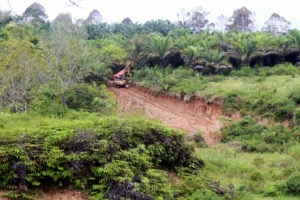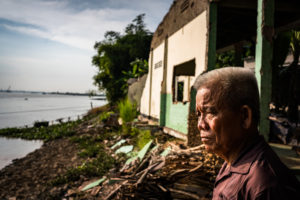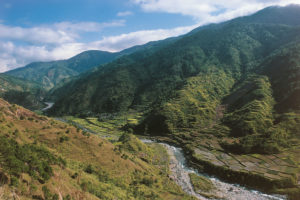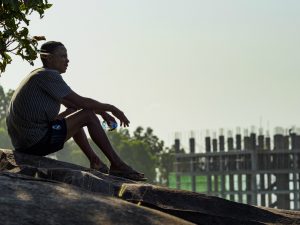“Before when we wanted to eat, we just went and caught some fish, but now it’s nothing like before, as all the natural resources have disappeared,” says Sen Chantha, 68, who lives in a coastal hamlet within Ream National Park in southwest Cambodia. His house faces the turquoise waters of the Gulf of Thailand.
The mangrove forests, wetlands and rocky coasts that supported abundant wildlife in the park have also attracted opportunistic developers. Cambodia’s government has granted development rights for mass tourism resorts leading to deforestation and the drainage of ecologically vital mangroves.
“On the way out, you will see many big trucks clearing land all over the place… They’ve started clearing about four kilometres away, and they’ll probably come here,” says Chantha, who has lived in Prek Trabek village since the early 1990s. As forest cover has disappeared, Chantha has become a campaigner, keen to defend his community against a Chinese developer backed by the Cambodian elite.
Rights threatened
Chantha’s family is one of more than 100 in his village engaged in a years-old conflict over land with the Chinese company Yeejia Tourism Development, whose concession surrounds their homes. The company has allowed them to remain in the area, but severely restricted their space to live and work.
Choeun Trop, 55, says Yeejia has taken part of her land and stopped her from collecting rattan from the forest.
Over the past two or three years, officials from the company have monitored her community tightly, at one point requiring members to carry identification cards and barring outside visitors, she says.
Trop’s son, then 16, is now in jail after joining a protest against Yeejia during which some protestors dismantled a guardhouse at the entrance to the company’s concession.
“We’re poor. It’s been very difficult, and we couldn’t ask anyone to help,” she says. She tried to enlist the support of two Cambodian human rights organisations, but both told her they could not intervene. “I cry and cry, and if I cry too much, I’m afraid I will faint again, and no one will take care of my son. My son cries because the situation inside the prison is terrible, and he has a very small space to sleep.”
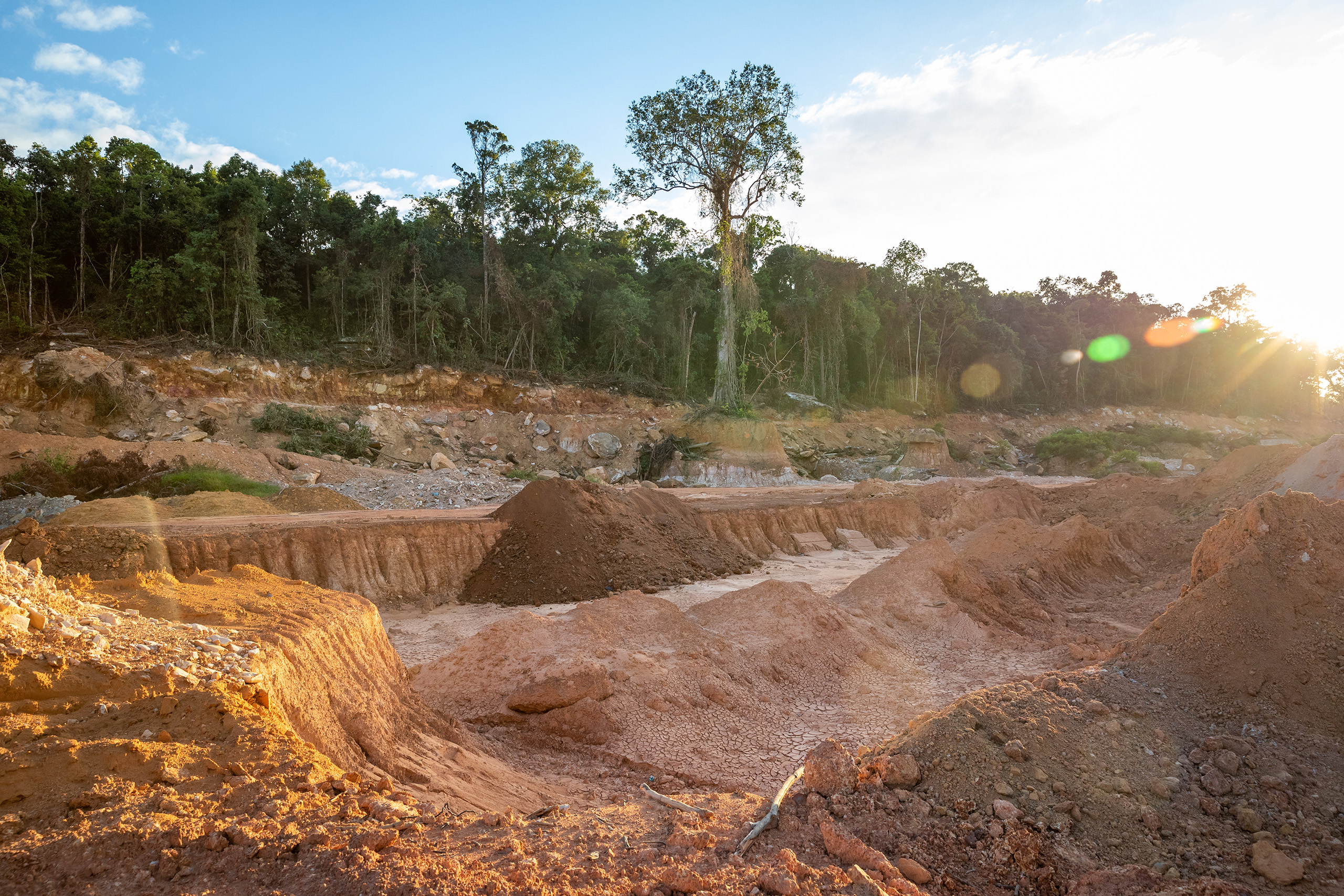
Precious forests and wetlands
Ream National Park covers 34,000 hectares of diverse landscapes that include the Prek Toek Sap estuary, low-lying mountains, miles of mangroves, seagrass beds, coral reefs and parts of two islands.
General forests cover 55% of the land, while mangroves take about 7%. A vital ecosystem for biodiversity, mangroves support many plants, fish and crustaceans, and the fisheries they nurture feed local people.
Elsewhere in the park, remote areas of dry forest, covering 13%, could still conceal one of the last populations of rare wild cattle known as kouprey, according to a 2006 report by University of Copenhagen ecologist Robert Schmidt.
When Ream was established in 1995, it faced significant levels of commercial logging and fishing – at least one-third of its area had already been heavily changed as a result of resource extraction.
Finding ways to stop this was one of the new park’s main concerns, and international organisations, including the Asia Development Bank and the United Nations, were deployed to help find solutions.
Internationally funded projects concentrated on developing a management plan for the park and on training park rangers. Opening the park’s headquarters in late 1998, the then-environment minister, Mok Mareth, promised Ream would be a “role model” for protected areas in the country.
But although the funded projects did manage to end commercial resource extraction, illegal logging and fishing continued to flourish, with corrupt police, navy officers and fishermen combining forces to plunder the park. Then, when international funding ended in 2000, the park was left with very little financial support.

Several reports at the time recommended ecotourism as a way to fund the park. In one from the Economy and Environment Program for Southeast Asia, published in 2001, academic Thanakvaro Thyl de Lopez outlined a “dream park” scenario, in which revenue would be generated through nature-driven tourism, allowing local people living inside the park to continue using its resources in a sustainable way.
But the report warned that this scenario would require the support of international donors, at a time when their programmes had not been renewed due to “lack of interest”.
The developers descend
With the promise of sustainable tourism starting to fade, commercial tourism stepped in.
In June 2008, Prime Minister Hun Sen signed decrees granting concessions to two companies – Yeejia, and Evergreen Success & Asia Resort Development.
Yeejia was given rights over 3,300 hectares of the park, an area they named Golden Silver Bay. When reporters visited the concession in January 2021, they found around a dozen half-built hotel-sized structures, most flanked by Cambodian guards. Outside one of them, a sign reads Qin Yue Ream National Coast in both Khmer and Chinese characters. Further in, patches of newly-paved road led to clearings where rows of identical off-white cottages stood out against the raw, red earth. Another road opened out onto a fresh construction site, where excavators were levelling a hillside, the roots of the remaining trees dangling over the manmade cliffs.
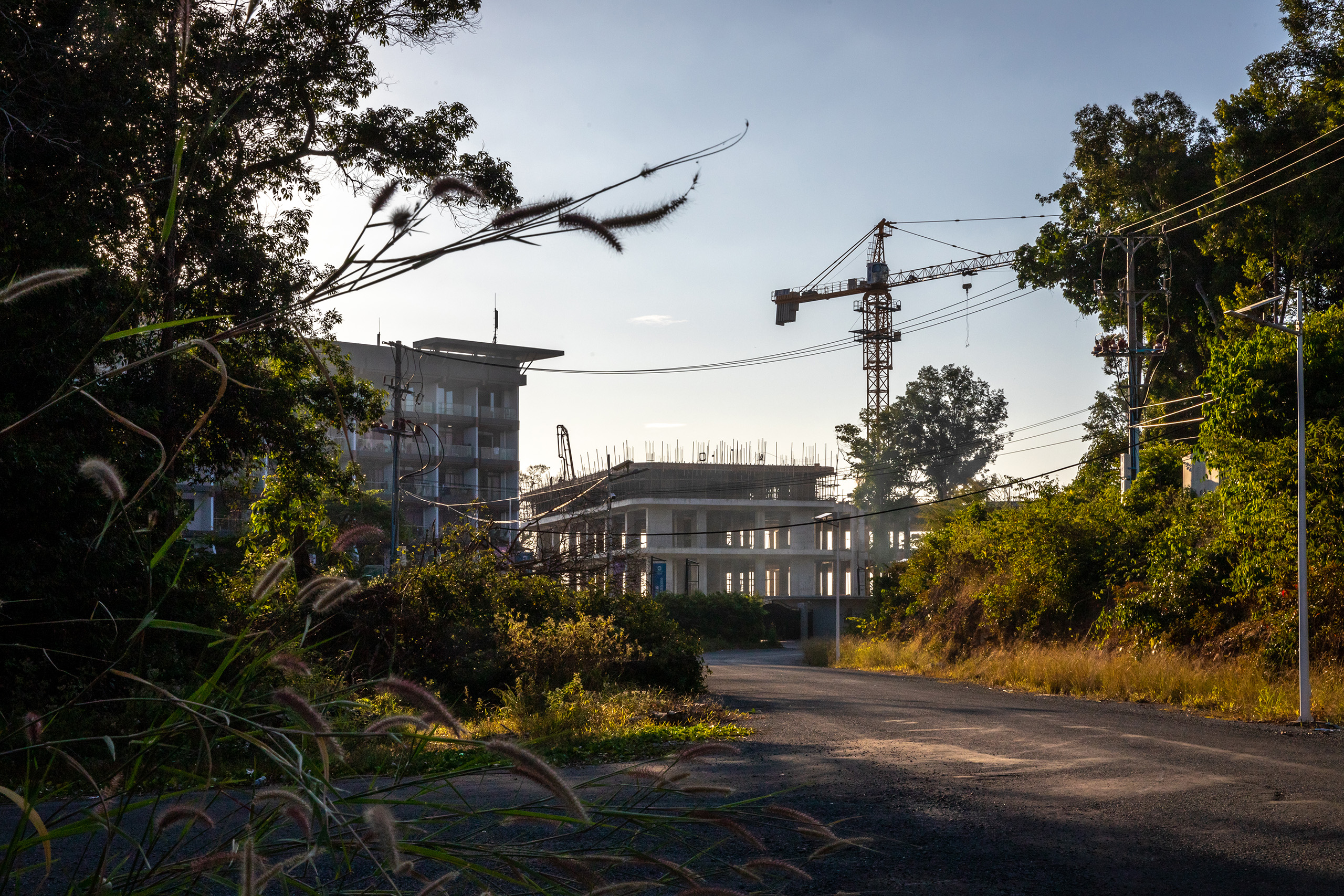
The other company, Evergreen Success & Asia Resort Development, was given a concession of 2,377 hectares.
Evergreen Success is tied to Hun To, a nephew of the prime minister, who has been investigated by the Australian authorities in connection with drug smuggling and money laundering. According to a 2012 report in The Age newspaper, To was of interest to Operation Illipango, an Australian investigation into heroin concealed in Cambodian timber shipments. Plans to arrest To were derailed when the Australian embassy in Phnom Penh cancelled his travel visa.
Powerful connections
To has since become a co-director of the Lixin Group, a Taiwanese construction and property company that has already developed a hotel in Sihanoukville under the US-based brand Wyndham.
Lixin is heavily promoting its “New City” development in Ream National Park. An advertisement on the resort’s WeChat channel from September emphasised the eco-tourism side of the project. But plans for the resort include massive developments inside the park, from a golf resort and a horse racing track to casinos and hotels, all flanked by mangroves.
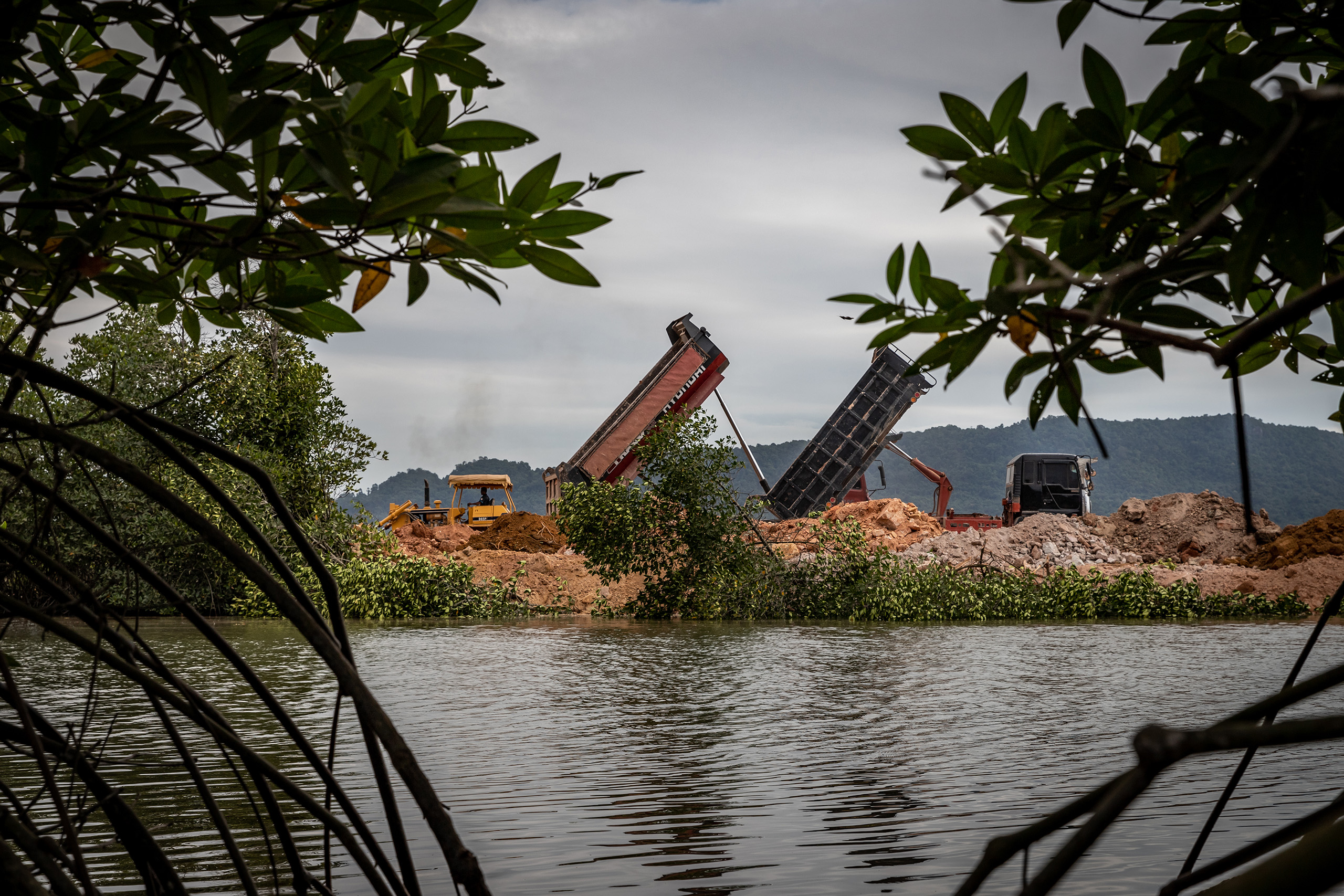
Yeejia’s rise in Cambodia has also depended on elite contacts. Company chair Fu Xianting’s resumé includes time in the Chinese People’s Liberation Army and then in state-owned companies, one of which brought him to Cambodia for a conference on agricultural machinery and light manufacturing.
According to a 2016 Financial Times investigation, Cambodia’s Council of Ministers revoked Fu’s concession in Ream after concerns about forest clearance from environmental groups. But Fu, who has close personal ties to Hun Sen, met with the Cambodian leader and obtained his support for continued development.
Yeejia’s development plans for Golden Silver Bay range from casinos and luxury hotels to a conference centre and medical rehabilitation facilities. Its WeChat social media presence shows it is advertising to Chinese developers seeking a slice of Cambodia, as well as to tourists. In November, Yeejia held a small ground-breaking ceremony with Zhonghai Tianhong Real Estate (Cambodia), which has leased 4 hectares of land from the developer on a 99-year lease – the same timespan as Yeejia’s 2008 concession within the park. This is despite the fact that, according to Cambodian law, concessions cannot be sold to another company without a new contract being drawn up with the government.
Neither Yeejia nor Lixin would respond to requests for comment from China Dialogue.
Ongoing destruction
Beyond the bulldozers currently clearing land in the name of tourism, illegal logging for timber has continued in Ream. Chantha, the community activist, says the state-employed park rangers conduct frequent patrols, but will release loggers who pay them. Chantha has accompanied the patrols and claims to have witnessed bribe-taking.
According to the 2001 de Lopez report, about half of rural households inside the park engaged in illegal logging in the past. Chantha and other villagers admit to cutting trees for their own use before Yeejia officials stopped them.
But things are different now. “The Ministry of Environment officials blame the community for deforestation, but it’s not us,” he says. “It’s someone outside and hired by some oknha [tycoons] or rich businessman to come clear land here.”
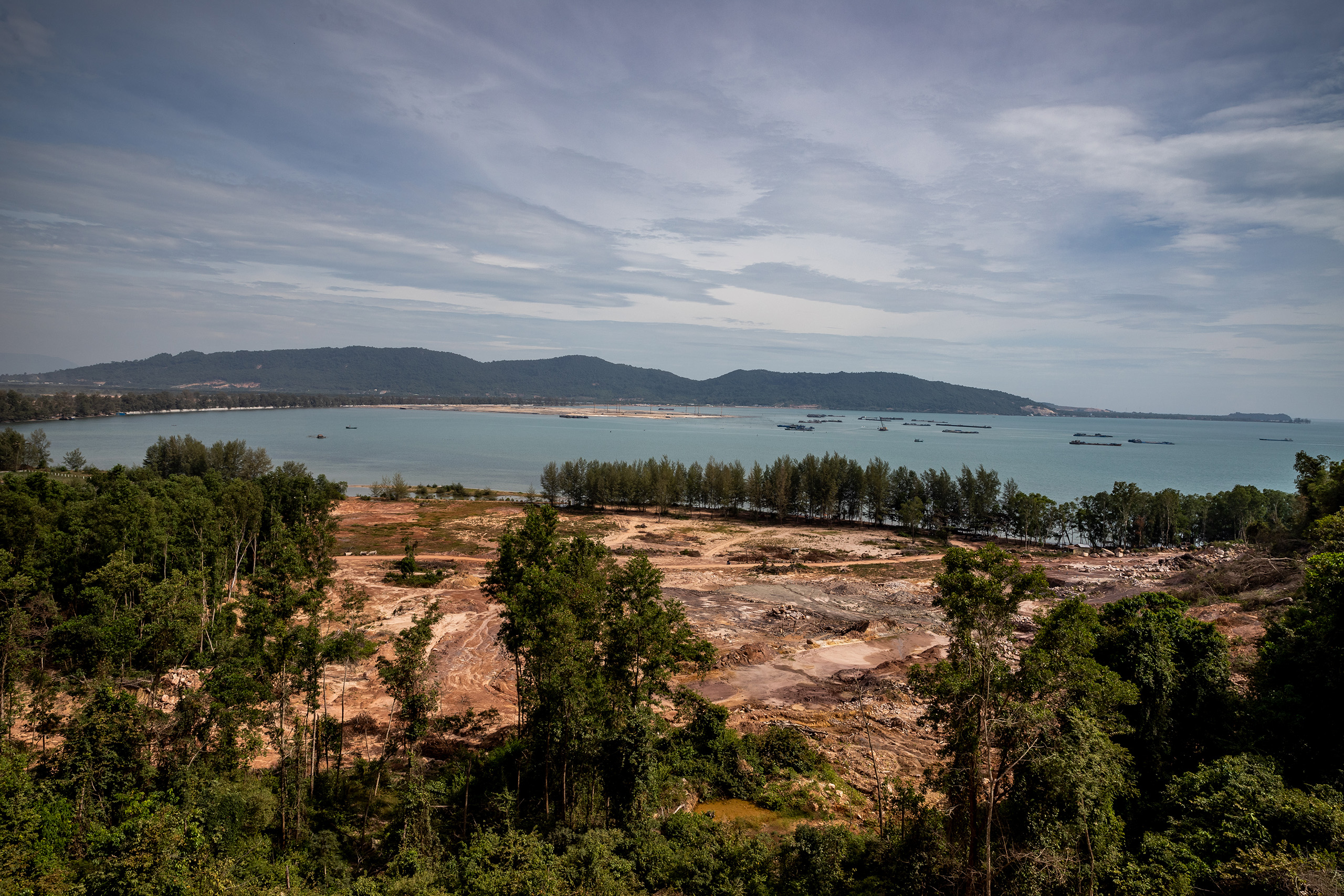
Meanwhile, the coast of Ream and the rest of Preah Sihanouk province is also under threat. Ouk Vibol, director of conservation in Cambodia’s Fisheries Administration, says overfishing is a significant challenge, with trawlers scooping up whatever fish they can find, destroying seagrass beds in the process. The loss of mangroves due to the park’s tourism developments is also having a big impact on fish stocks, says Ouk.
“If you destroy one habitat, there are real negative impacts on the species that move from one habitat to another,” he says.
Just outside the national park, one little-known Chinese–Cambodian company, Canopy Sands Development, has undertaken a massive coastal reclamation project on 427 hectares granted by the Cambodian government. The company was formed one month before it received the land. Its shareholders also chair powerful companies in Cambodia, including Prince Group, whose China-born director, Chen Zhi, has obtained Cambodian citizenship through his investments.
This and other developments along the coast, which once boasted waters teeming with lucrative squid, crab and fish, have changed local fishers’ lives.
Docking just north of the Canopy Sands development, Chan Ra, 27, says he has to be very careful where he drops his fishing lines. The traditional gear he uses to catch squid is made with large shells strung out along a line. The squid nestle into the shells for shelter without the need for bait. The shells are durable but expensive and are often damaged by the sand-dredging boats filling the Canopy Sands area, says Ra. There are still some squid to be found close to the shore, but the fisher says he has to travel further to catch crabs.
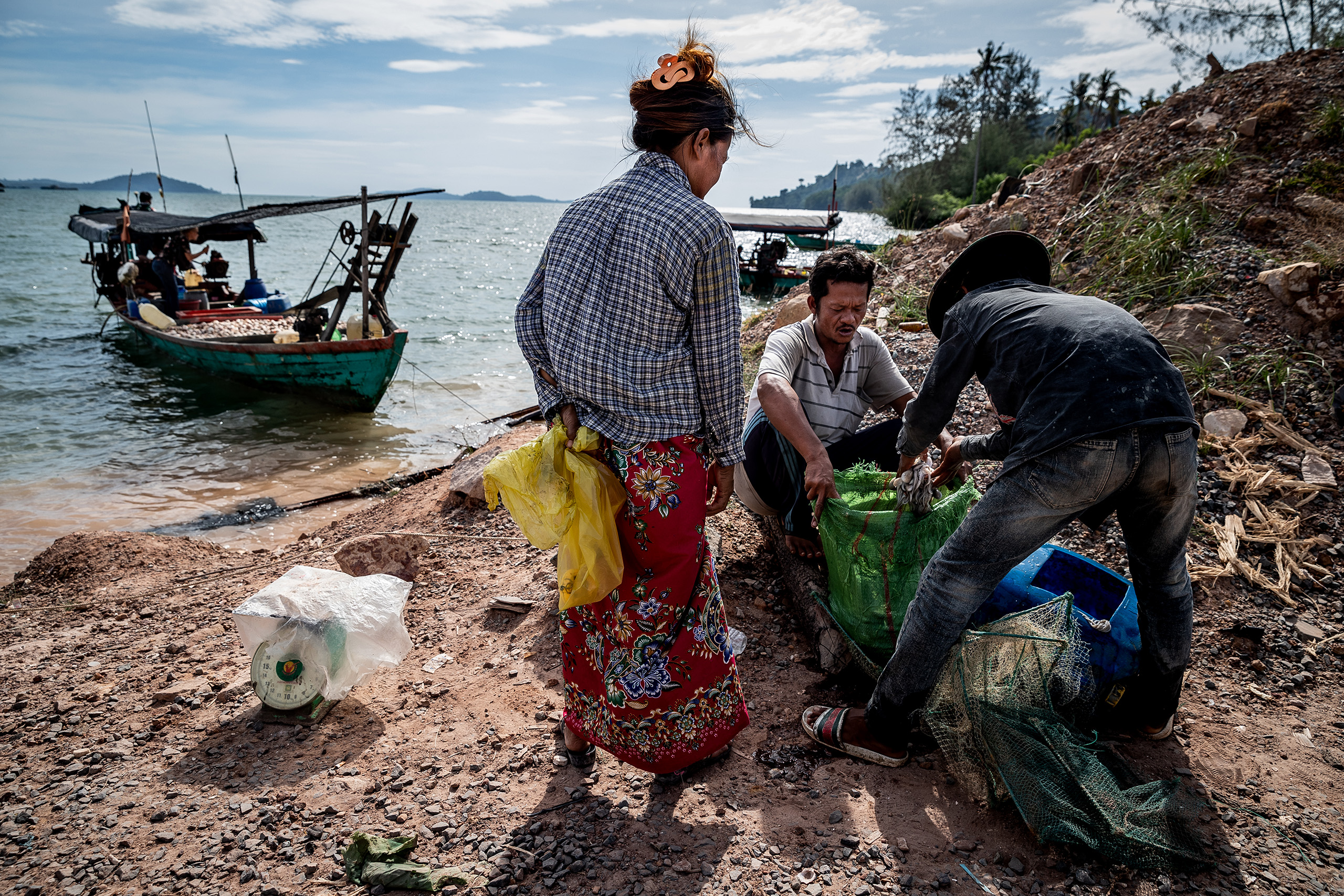
Ra lives mostly on his boat these days, because another company has been reclaiming land from the sea on the bay where he used to live. “Before we could reach home by boat, but now they’re filling it with land,” he says.
Ra has had to move three times due to development projects. Like many local people, he built a home without procuring an official land title – a requirement that was seldom enforced until land prices began to climb.
Nowhere is safe
Nam Then, 32, runs a small shop selling sundries on a hillside a couple of kilometres from the entrance to Yeejia’s concession. He has not been directly impacted by the long-running dispute between local people and the Chinese company, whose concession overlaps their customary land. But he shares his neighbours’ concerns and attends meetings about the issue at the Ream commune office.
“We share information around the community,” he says. “We are the same people who have the same affections. I am also living in one part of the community, just in a different area.”
In June last year, the government finally allocated land and promised titles to the three communities in the park affected by Yeejia’s concession. Details have yet to be worked out, however. Then keeps a plastic folder full of documents showing the outlines of plots. Some families are missing out, he says, but he and others are watching the process closely.
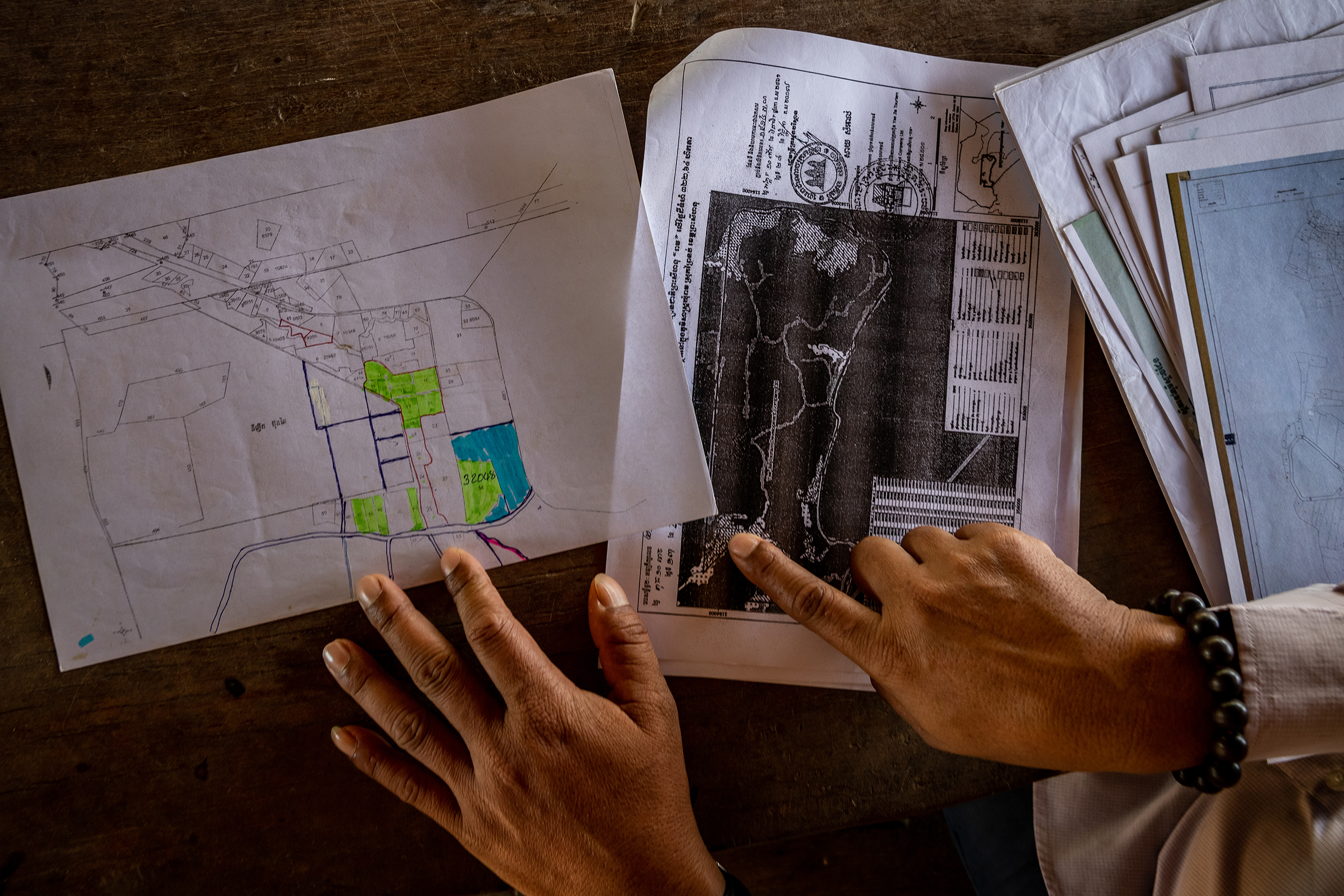
Then moved to his current home and shop in 2007 after Ream Naval Academy – part of a military branch that is caught up in controversies over Chinese versus US access – decided to expand into the land near where his family lived.
“Looking back at 2007, we didn’t have anything, the people were weak, information systems didn’t exist, and we were living in a military zone, so when you’re trying to protest, there was big pressure [on us],” he says.
The family’s current home is on the other side of the same mountain. They have remained relatively undisturbed since they moved, but, on a morning in late January, Then told reporters that much of the land facing his house had been cleared. He was not sure what for. When reporters passed his house again at dusk, a digger was forging a new road around the mountain, leading back to the naval academy.
When he first moved in, Then recalls: “It was all forest, huge forest, there wasn’t any road yet.” Now, for the villagers of Ream “it’s very difficult, because the houses are all on company land.”

